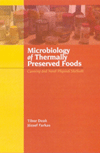Article: Fats: From Nutritional Nuances to Physical Functionality -- February 2009

The Importance of the Nutritional Panel
Consumers are faced with many nutrition messages on foods. For example, there are nutritional claims and the Nutrition Facts Panel, ingredient statements, food pyramids and other health messages. What is “good” today may be “bad” tomorrow. Organic, natural, growth hormones and free-range claims present additional information and issues.In a presentation titled, “The Fact of the Matter: The Facts are in the Nutritional Panel,” at Prepared Foods’ 2008 R&D Seminar-East, Marjorie Gilbert, food ingredients director for AarhusKarlshamn USA Inc., discussed consumer attitudes, with respect to their view of product labels.
According to a study by IFIC in June 2007, consumers first look for expiration dates on package labels and then to the Nutrition Facts Panel (66%, up from 58% in 2006), followed by the ingredient statement (59%, up from 57%). However, they looked less to statements about health and nutrition benefits in 2007 than they did in 2006. One could say consumers are looking at the facts, rather than the claims, says Gilbert.
According to IFIC’s 2007 survey, when consumers look at the nutrition label, they look first for total calories, secondly for total fat and thirdly for trans fat. Saturated fat is sixth on the list; up from position number 10 in 2006.
Fat is top-of-mind with consumers, but which oils do they consider healthy? Olive oil is in first place, followed by other liquid oils: canola, soybean and sunflower. Unfortunately, liquid oils cannot always provide the stability, structure and flavor expected in finished products. Palm oil can provide these benefits in many cases. When consumers were asked about palm oil, some 73% thought it was healthy, were unaware of it or had no opinion. This is positive and provides a tremendous opportunity to meet certain formulation goals, says Gilbert.
Due to regulations, product goals have moved past simple disclosure of trans fat content to outright bans (in the case of local governments). Thus, based on functionality, palm oil becomes a logical alternative to hydrogenated oils, as it is naturally trans fat-free and provides the solid fat characteristics required by bakery applications.
Looking at the nutrition label of a model cookie reformulated with palm oil, the trans would be zero, but the saturates more than double. While there is not any current legislation regarding saturates, they are certainly of concern to consumers. Ideally, the next generation of solutions would be ingredients with zero trans fat and zero saturates, which again brings up liquid oils. Most traditional bakery products cannot be produced with liquid oils.
Saturated fats occur either naturally or are created during oil processing. While fully hydrogenated oils are trans fat-free, this is not always a desired solution, given the association consumers make between hydrogenation and trans fat.
“So where do we go from here?” asked Gilbert. Palm oil lends itself to fractionation; a physical processing that isolates the solid (i.e., stearin) fractions of palm oil to produce highly functional components. Additionally, by utilizing oil-processing techniques, including blending and interesterification, oil solutions can be created to balance needed functionality with the nutritional label desired. Using a blend of oil and a high-stearin fraction palm oil, trans fat-free cookies can now be formulated that are trans fat-free and with reduced saturates. These specialty blends can also be used in additional applications, such as cakes, frying, fillings and icings.
The liquid oil portion of blends can be from any number of oils. For example, The Kellogg Company has made a commitment to low-linolenic soybean and uses it as a marketing tool. Frito-Lay has focused on sun oil, even putting a sunflower on its packaging. Oil seed companies are working to develop new nutritional oil solutions. However, these solutions take time, measured in years, not months, and the resulting oils will still require some saturated fats for functionality.
“What will the future hold?” asked Gilbert. Will additional fatty acid labeling be mandated? Will warning labels be required, such as with cigarettes or increased ingredient details?
There is good news as well. Consumers in the IFIC study also say that the industry is doing a good job. Through education of consumers and of food companies; by striving for clean labeling and use of “pantry” ingredients that consumers understand; by working as an industry on product and process innovation; and by not vilifying any oil, fatty acid or process, consumer expectations should continue to be exceeded.
“The Fact of the Matter: The Facts are in the Nutritional Panel,” Marjorie Gilbert, food ingredients director, AarhusKarlshamn USA Inc., Marjorie.gilbert@aak.com
Reducing Fat in Chocolate with a New Emulsifier System
Another presentation addressed fat reduction in chocolate confectionery. There are a number of different emulsifiers for chocolate. These include lethicin (E322), ammonium phosphatide (E442), polyglycerol polyricinoleate (PGPR) and citric acid esters of mono-diglyceride (E472c). The latter compound is not, however, approved for use in the U.S. Emulsifiers serve a variety of roles in chocolate.They reduce viscosity, reduce overall fat content and will enhance functionality. In his presentation, “Fat Reduction Like Never Before: New Emulsifier System for Chocolate Production,” Hans Henrik Wikman, technical sales manager for Palsgaard Incorporated, discussed Palsgaard’s new emulsifier system for chocolate production.
In an age where there are concerns about food allergens, developers may want to consider not using lecithin, since it is derived from soy, said Wikman. Ammonium phosphatide and polyglycerol polyricinoleate (PGPR) are alternatives for U.S. processors. Ammonium phosphatide can replace lecithin in many chocolate products; it can substitute for fat; will reduce Casson yield value and plastic viscosity; is not derived from genetically modified products; and does not have to be declared as an allergen. PGPR has very similar properties, but has the ability to work synergistically with lecithin, ammonium phosphatide and citric acid esters. It is produced by reacting polyglycerol with polyricinoleate. It is generally understood that PGPR works by lowering the Casson yield value of the chocolate, whereas the Casson plastic viscosity is mainly reduced by the addition of lecithin or ammonium phosphatide. The yield value can be explained in terms of friction between the particles in liquid chocolate and is defined as the force required to initiate the flow of the chocolate mass.
PGPR may be used effectively in molding and enrobing. When blended with chocolate, PGPR enhances the flow of chocolate into the molds; helps reduce incorporation of air in the chocolate; and improves covering of inclusions used in the formulation. When manufacturing molded chocolates, incorporation of PGPR also allows the processor to minimize the amount of vibration. There are similar benefits to be derived from incorporating PGPR in chocolate used for enrobing. These include better flow of chocolate in the enrober; more efficient covering of centers that are hard to cover; reduced incorporation of air bubbles into the chocolate; and better control of the chocolate layer.
Plastic viscosity decreases with increased levels of any of the emulsifiers. The effects of lecithin, ammonium phosphatide and citric esters on plastic may be seen in the chart, “Impact on Plastic Viscosity.” The incorporation of PGPR with other emulsifiers also provides developers with a means to reduce costs by reducing the amount of fat utilized in the formulation. Lower levels of cocoa butter and cocoa liquor may be used, without adversely affecting product quality.
Lecithin, PGPR and ammonium phosphatide may be used alone or in combination in chocolate blends. PGPR may be used to adjust yield values, plus it works synergistically with lecithin, allowing chocolatiers to manufacture products that have lower levels of fat without compromising acceptance. Finally, combining ammonium phosphatide and PGPR allows an even greater reduction in the amount of fat in products.
“Fat Reduction Like Never Before: New Emulsifier System for Chocolate Production,” Hans Henrik Wikman, technical sales manager, Palsgaard Incorporated, hhw@palsgaard.dk
--Summary by Richard F. Stier, Contributing Editor
Long-chain Omega-3 Benefits
The primary source of long-chain omega-3s, EPA and DHA, is coldwater fish. Flaxseed, walnut, canola and soybean oils are sources of ALA, a short-chain omega-3, Hope Hale, R.D., senior manager nutrition and regulatory affairs, OmegaPure, reminded the audience in a presentation titled, “Long-chain Omega-3s in Functional Foods.”EPA has been shown to improve blood platelet functionality, reduce inflammation, reduce the occurrence of secondary heart attacks, improve vasodilatation and is necessary for certain metabolic processes. DHA promotes proper cell turnover, supports the development of healthy blood cells, assists in the creation of blood vessels and inhibits free fatty acids from destroying healthy cells. There are literally thousands of studies supporting the benefits of long-chain omega-3 fatty acids. There is, however, some debate worldwide as to the recommended daily requirements for these nutrients. For example, the World Health Organization and British Nutrition Foundation advise adults to consume between 1,000-2,000mg long-chain fatty acids daily, while the American Heart Association advises between 500-3,000mg daily. The Australian and New Zealand Health Authorities are the only government agencies that recommend between 430-610mg daily.
Sales of functional foods and beverages have been trending upwards for the past few years--a trend that will continue in the foreseeable future. Sales of products fortified with omega-3 fatty acids have followed this same trend. ALA kicked off the trend towards incorporating omega-3s in products. However, as the producers of EPA and DHA improved the technologies for manufacturing fish oils to eliminate undesirable odors and flavors, the food industry has adopted EPA and DHA. These two nutrients are expected to grab some 70% share of the omega-3 market by 2011.
Increased consumer awareness of the relationship between health and diet has helped to fuel the rapid increase of functional foods containing omega-3 fatty acids. More and more consumers understand that a better diet can improve the quality of life and improve overall health. A survey conducted by IFIC indicated that 63% of consumers were aware of omega-3s in 2006. This figure jumped to 71% by 2007. This increase in awareness goes hand-in-hand with a desire amongst consumers to adopt a healthier lifestyle, including eating habits that will reduce the risk of heart disease. Most consumers realize that factors, such as saturated fats and trans fatty acids, may increase the risk of heart disease. They also understand that omega-3 fatty acids or fish oils may reduce that risk, as well as reduce cholesterol levels, help control blood pressure, improve vision and enhance energy levels.
After a review of the heart health science, FDA approved a qualified heart health claim for EPA and DHA. The qualified heart health claim must read: “Supportive but not conclusive research shows that consumption of EPA and DHA omega-3 fatty acids may reduce the risk of coronary heart disease. One serving of [insert product here] provides [X] grams of EPA and DHA omega-3 fatty acids.” Processors using omega-3s can also make structure-function claims. These must be truthful, cannot mislead consumers, and the claim must be substantiated.
Omega-3s are beneficial for cardiovascular, immune and respiratory systems, and essential for good health. FDA and health organizations continue to review the science of omega-3s and report the benefits. Opportunities abound for manufacturers to add omega-3s to their product offerings.
“Long-chain Omega-3s in Functional Foods,” Hope Hale, R.D., senior manager nutrition and regulatory affairs, OmegaPure, hhale@omegapure.com
--Summary by Richard F. Stier, Contributing Editor
Emulsifiers in Cake
Emulsifiers are key ingredients in cakes. There are several concerns with cake emulsifiers, which prompted the efforts to develop a new emulsifier for these products. The problems relate to gels, dispersion, shortening and traditional emulsifiers. The primary function of gels is aeration. These materials are also difficult to handle, hard to disperse, have a limited shelflife and can be expensive. Dispersion is also a concern with other emulsifiers. They are difficult to use and are sensitive ingredients. Shortenings are another key ingredient in cakes, but choice is limited, and costs may be high. Lastly, traditional emulsifiers vary in their performance and have limited aeration power. Hans Henrik Wikman, technical sales manager at Palsgaard Incorporated, enumerated efforts to tackle these problems in his speech titled, “Reformulate Industrial Cake Recipes Using an Instant Cake Emulsifier in Powder Form.”In an effort to address these concerns, a new instant emulsifier with the following characteristics was developed: 1) activated powder; 2) strong and instant aeration power; 3) fast reaction, ergo a short mixing time; 4) easy to dose; 5) little or no waste; 6) low-cost/only a small dose is required; 7) long shelflife; 8) one-step production; 9) resistant to mechanical manipulation; and 10) results are consistent.
Such a product would allow full flexibility and use of raw materials, the use of trans-free fats and oils, allow for greater automation, reduced mixing times and make for more stable batters.
The new emulsifier is a polyglycerolester. These compounds are produced by reacting fatty acids with diglycerides. Polyglycerolesters have moieties that are soluble in both water and oil and have the ability to trap starches. These compounds may be utilized effectively in sponge cakes, pound cakes and other cake products. In sponge cake batters, polyglycerolesters are very dynamic molecules. They quickly migrate and reorganize during cell expansion or when forming new air cells. This is an improvement over proteins, which are very slow to migrate and contribute little to the formation of gas cells. In pound cake batters, the polyglycerolester molecules interact with fat crystals and will cover the gas cell interface during aeration. At elevated temperatures, the emulsifier stabilizes the cake as the fats melt. When the cake cools, polyglycerolester molecules serve to enhance crystal formation, increasing the rate of crystal formation. Crystals that form quickly are smaller, which enhances organoleptic qualities of the cake.
The supplier believes that using poly-glycerolesters in cakes as an emulsifier will allow manufacturers to produce items that meet consumer demands. The cakes can be formulated with oils that are low- or no- trans fat and, therefore, not hydrogenated. They also will allow cakes to be lower in calories, by reducing the amount of fat required. Polyglycerolesters are kosher and not a source of allergens.
“Reformulate Industrial Cake Recipes Using an Instant Cake Emulsifier in Powder Form,” Hans Henrik Wikman, technical sales manager, Palsgaard Incorporated, hhw@palsgaard.dk
--Summary by Richard F. Stier, Contributing Editor
Omega Resources
Another way in which food manufacturers increasingly seek to improve the nutrient value of their products is through the inclusion of omega-3 fatty acids from flax oil and fish oil. Flax contains the omega-3 fatty acid α-linolenic acid (ALA: 9c12c15c-18:3). Fish oils are sources of the longer-chain omega-3s, eicosapentaenoic acid (EPA: 5c8c11c14c17c-20:5) and docosahexaenoic acid (DHA: 4c7c10c13c16c19c-22:6).Discussion of the positive attributes of the omega-3 fatty acids is being accompanied by unfortunate and often confusing messages about the health effects of the specific omega-3s; in particular, the physiological significance of ALA vs. fish oil-derived EPA and DHA, said Kelley Fitzpatrick, director of health and nutrition for Flax Canada 2015, a wholly-owned subsidiary of the Flax Council of Canada, in a presentation entitled, “The Omega-3 Debate--What About Omega-6?” at Prepared Foods’ 2008 R&D Seminar-East.
For the last few years, EPA and DHA have been in the spotlight for their health benefits. Recent headlines have warned consumers not to confuse these omega-3s with ALA and have downplayed the significance of ALA for health. However, ALA has an important role in reducing chronic disease through conversion to EPA and DHA, as well as through its own unique metabolic activities.
Fitzpatrick noted that estimates of the amount of ALA converted to EPA range from 0.2-8% (Burdge, GC, and Calder, PC. 2005. Reprod Nutr Dev. 45:581-97), with young women showing a conversion rate as high as 21% (Burdge, GC and Wootton, SA. Conversion of α-linolenic to eicosapentaenoic, docosapentaenoic and docosahexaenoic acids in young women. Br. J. Nutr. 2002. 88: 411-420.) Conversion of ALA to DHA appears to be limited in humans, with most studies showing a conversion rate of about 0.05%, although one study reported a figure of 4%, and a conversion rate of 9% was reported in young women. The large differences in the rates of ALA conversion reflect major differences in study methodologies.
The impact that the omega-6 fatty acid linoleic acid (LA: 9c12c-18:6) has on reducing ALA’s health benefits is often overlooked, said Fitzpatrick. Diets rich in LA reduce the conversion of ALA to EPA and DHA. For example, in a study of 22 healthy men, an LA-rich diet reduced the EPA content of plasma phospholipids significantly after four weeks (when compared with a low-LA diet), even though both diets contained the same amount of ALA (Liou, YA, et al. 2007. J. Nutr. 137:945-952). The absolute amounts of ALA and LA in the diet also effect ALA conversion. Decreasing the intake of LA has been found to increase the proportion of dietary ALA converted into EPA, while increasing ALA intake can increase the absolute amount of DHA synthesized (Goyens, PLL, et al. 2006. Am. J. Clin. Nutr. 84:44-53).
Increasingly, research indicates that ALA consumption may reduce risk of heart disease and other inflammatory diseases by reducing inflammatory cytokines and eicosanoids, said Fitzpatrick. LA is converted to longer-chain omega-6 fatty acids, in particular, arachidonic acid (AA). AA is the precursor of eicosanoids, several of which promote blood platelet aggregation, the clotting of blood within blood vessels (thrombosis) and inflammatory reactions, she added. Examples of such pro-inflammatory eicosanoids include thromboxane A2 (TXA2) and leukotriene B4 (LTB4). TXA2 also is one of the most potent promoters of platelet aggregation known, and LTB4 increases the release of reactive oxygen species and cytokines.
For example, in one study of healthy men who consumed 1.75tbsp of flax oil daily for four weeks, the TXB2 (an inactive metabolite of TXA2) concentration in immune cells decreased by 30% (Caughey, GE, et al. 1996. Am. J. Clin. Nutr. 63:116-22). Similarly, concentrations of the pro-inflammatory cytokines TNF-α and IL-1β in immune cells decreased 26% and 28%, respectively. Fitzpatrick noted another study (Zhao, G, et al. 2007. Am. J. Clin. Nutr. 85:385-91) in which serum levels of TNF-α decreased by 43%, and the production by immune cells of TNF-α and IL-1β decreased between 18% and 22% in 23 people with high cholesterol levels who consumed a diet rich in ALA, in comparison with the average American diet.
The current intakes of ALA, EPA and DHA in North America are well below the levels recognized for optimal health.
It is unfortunate that the omega-3 debate--and those that choose to downplay the importance of ALA in the diet--has not focused on the omega-6 side of the metabolic equation, notes Fitzpatrick. The typical North American diet is “deficient” in omega-3 fatty acids and overly rich in omega-6 fatty acids: The n-6/n-3 ratio may be as high as 17:1 in some Western diets. In the Women’s Health Study, some women ate diets with a ratio of 33:1. The n-6/n-3 ratio recommended by international nutrition agencies ranges from 4:1 to 10:1. Improving one’s n-6/n-3 ratio can be achieved by decreasing the intake of omega-6 fats, increasing the intake of omega-3 fats or, most importantly, doing both.
“The Omega-3 Debate--What About Omega-6?” Kelley Fitzpatrick, director of health and nutrition for Flax Canada 2015, a wholly-owned subsidiary of the Flax Council of Canada, kelleyf@shaw.ca
Looking for a reprint of this article?
From high-res PDFs to custom plaques, order your copy today!






